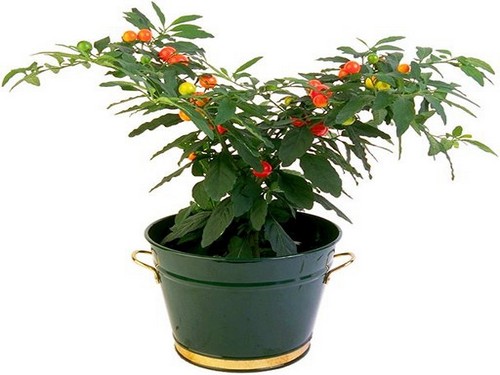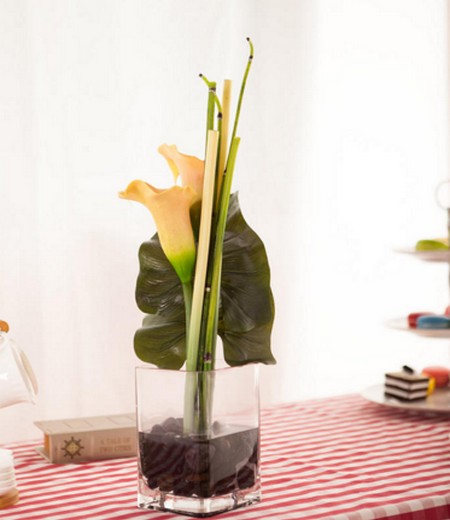Planting technique of potted calla
In recent years, potted colored calla lilies have become the best-selling species in the Beijing New year Flower Market. Colorful calla lilies are loved by people because of their beautiful and unique flowers, rich and colorful flowers, and many changes in leaf color and leaf shape. The production advantage of potted color calla is obvious, and its production cost is controllable. Compared with the mainstream potted flowers such as Anthurium andraeanum, pineapple and Phalaenopsis, the planting technology is simple, which is suitable not only for large and medium-sized enterprises, but also for small-scale growers.

Soil:
1. Deep turning: the preparation of the cultivation bed is divided into four steps, that is, turning the soil deeply, disinfecting, making the bed and applying base fertilizer. First, turn the soil deep into 20-30cm.
2. Disinfection: expose the deeply turned soil in the hot sun for a few days, or disinfect it with steam, chloropicrin, methyl bromide, pentachloronitrobenzene and so on. The cultivation bed is generally high bed, bed width 80cm, trail 40cm, or bed width 40cm, trail 40cm. 10cm above the ground, about 20cm above the trail. The amount of base fertilizer is generally applied per 667m2 greenhouse with expanded chicken manure 400Kg, dieucalyptus phosphate 50 Kg; or sterilized mature farm manure 2000-3000Kg, diammonium phosphate 50Kg.
Transplanting:
Planting time: the general varieties are planted at the end of August, and the flowering period is from November to May. Calla lilies can also be planted in March and bloom from June to August. If the greenhouse condition is better, it can be planted in spring and autumn and produce flowers in the four seasons. However, those who produce flowers in the four seasons should also let the plants have a dormant period of tall leaves in winter or midsummer, so that the plants can get nutritional supplement and rest, so as to ensure higher flower yield.
1. Planting density: take the seed bulb of one bud eye in 4cm as an example, the bed with wide 80cm can be planted with 4 rows, the row spacing is 20cm, the plant spacing is 12-20cm, and the wide 40cm bed is planted with 2 rows, the plant spacing is 10cm. The former planted about 25-40 plants per m2, while the latter planted about 50 plants per m2. About 17000-17000 plants per 667m2 greenhouse. If it is a multi-bud bulb or a bulb larger than 4cm, it should be sparsely planted. Can not plant too dense, otherwise poor ventilation and light transmission, easy to give birth to diseases and insects, flower yield also decreased.
2. The depth of cultivation: the soil cover is about 5cm in winter and about 8cm in summer.
3. Hormone treatment: if the bulb was treated with gibberellin GA3,GA4,GA7 or cytokinin Ba before planting, it was beneficial to flower bud differentiation, promote yield, and make the bulb develop better at the same time. The concentration of gibberellin and cytokinin was 500-100mg/L, and the seed balls were soaked for 10-30min.
Moisture:
Calla lilies like to be wet, and in the vigorous growing season, they should be often watered to make the soil often moist. The air humidity in the growing environment should also be high, so the surrounding ground should often spray water. However, if sprinkler irrigation is used, the leaf surface can be sprayed to prevent moisture from accumulating in the leaf sheath and causing decay. After flowering, it is necessary to reduce moisture to promote its dormancy.
Nutrition:
In the early stage of growth, the amount of topdressing should be less, such as fertile soil, but not topdressing, but into the flowering stage, you can apply inorganic fertilizer and organic fertilizer alternately. Inorganic fertilizers are mixed at the proportion of nitrogen, phosphorus and potassium at 1:1:1 to form 0.5% 15Kg 1% aqueous solution. Irrigate with water, once every 15 days, into 10-15Kg in each greenhouse. Immediately after irrigation, rinse the leaf surface and leaf base with clean water to prevent fertilizer and water from flowing into the leaf sheath to cause "seedling burning". Organic fertilizer can be used with rotten pig manure, chicken manure, etc., each plant below the root neck 5cm to dig a hole, each plant about 50g, the whole growing season can be topdressing organic fertilizer 2-3 times. Stop topdressing after full flowering to promote dormancy.
Temperature:
The temperature of spring all year round (12-25 ℃) can make calla lilies blossom every year, which needs to be heated in winter in the north and cooled in summer in the south.
Lighting:
When the sun is too strong in summer, if you want to shade properly, you can generally use a shading net with a shading rate of 30%, 50%; you need more sunshine in autumn and winter and there is no need to shade. In winter cultivation in the north, if extra light can be added, the growth and flowering is better, and the effect of continuous light for 3-5 hours after putting down the grass curtain in the afternoon is good.
Peel off old leaves:
In the period of vigorous growth and flowering, if the leaves are too luxuriant and crowded, the old leaves that have been drawn from the flower stem should be stripped off in time and cut off from the base, in order to avoid excessive leaves affecting light and ventilation, promote the growth of the flower stem and increase the yield. If there are not many old leaves, but the new leaves are too exuberant, the internal ventilation is poor, and the flower stems are less, we can also carry out leaf pulling treatment and gently press the leaves around to make the plants develop, so that the flower yield can be increased by combining reasonable measures of water and fertilizer.
Ventilation:
The whole greenhouse must have good ventilation measures, such as the front foot or rear window of the solar greenhouse can be ventilated in spring and autumn, the top of the greenhouse can be ventilated in winter, and stronger convection ventilation measures are needed in summer, otherwise the disease is serious and flowering is poor.
Key points of cut flowers:
1. Bind into bundles: the long pedicel is the most suitable for making flower bouquets. In the production, try to make the flower arrangement look forward to, relaxed and natural, the mouth should not be too tight so as not to strangle the pedicel. After decorating the binding, you might as well expose the uneven base to make the bouquet look more natural. For example, before inserting the vase, the base must be trimmed, which is beneficial to the water absorption and preservation of flowers.
2. Jianshan fixed: the stem of calla lotus is relatively stout, and the traditional Jianshan (flower cuttings) can be used to fix the flowers. Four calla lilies can be juxtaposed at the same time, and lead wire is used to pierce two thorns parallel on the stem to form a beautiful arc, which becomes the focus of the work, which not only adds a new meaning to the traditional composition, but also expands the cross-sectional area of the calla lily stem and is more stable fixed on Jianshan, avoiding the phenomenon that a single calla lotus is not easy to lodge because of its over-long flower diameter and loose inside the pedicel.
3. Skillful use of inflorescences: when calla lilies begin to wither, peel off the withered bracts, and yellow fleshy inflorescences are also good composition materials. After the pedicel is cut short, the inflorescence is easily inserted into the flower mud. In order to make the cylindrical inflorescence look more strange and beautiful, cover the pedicel completely with leaves or flowers.
Time: 2019-05-25 Click:
- Prev

Cultivation techniques of coral bean potted landscape
Coral bean red fruit, one autumn, in the green leaves against the background is extremely beautiful and attractive. It is a superior fruit plant, this plant is a small shrub of Solanaceae, its plant height up to 1 meter, but often cultivated as a year or two. Fruit color bright, for viewing. Multi-use seed reproduction
- Next

Cultivation techniques of bonsai cut flowers of calla lotus
Although colored calla lilies are often used for cut flowers because of their beautiful flowers, potted colored calla lilies also attract a large number of people. Colorful calla lilies have white, yellow, pink, orange, green, purple and other colors, rich in colors, in the flower market, its sales have been optimistic. And in recent years,
Related
- Fuxing push coffee new agricultural production and marketing class: lack of small-scale processing plants
- Jujube rice field leisure farm deep ploughing Yilan for five years to create a space for organic food and play
- Nongyu Farm-A trial of organic papaya for brave women with advanced technology
- Four points for attention in the prevention and control of diseases and insect pests of edible fungi
- How to add nutrient solution to Edible Fungi
- Is there any good way to control edible fungus mites?
- Open Inoculation Technology of Edible Fungi
- Is there any clever way to use fertilizer for edible fungus in winter?
- What agents are used to kill the pathogens of edible fungi in the mushroom shed?
- Rapid drying of Edible Fungi

